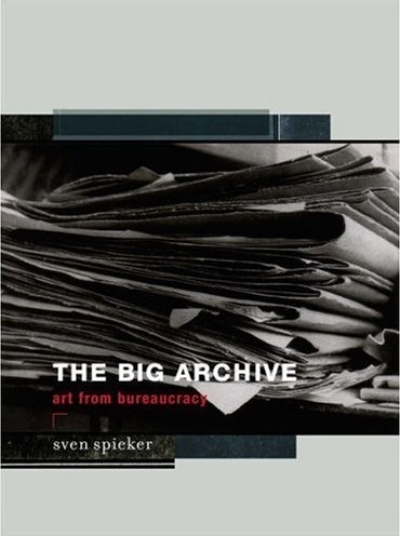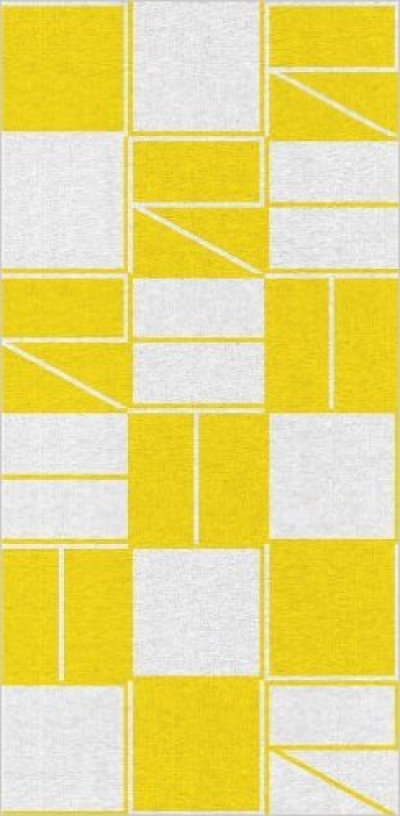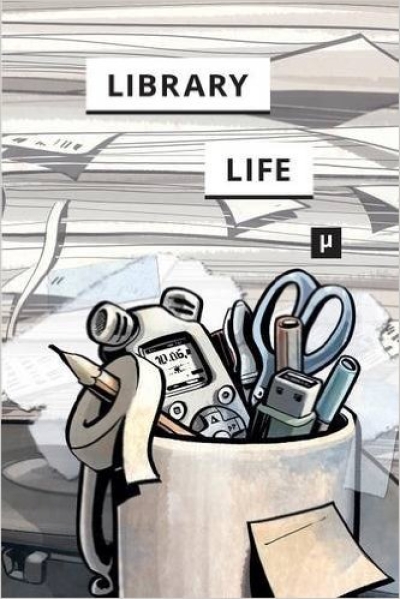Dirk Bell
Retour
Krentel, Barthel, Brand (Hg.)
Library Life. Werkstätten kulturwissenschaftlichen Forschens
gerade nicht auf Lager
Étienne Souriau
Die verschiedenen Modi der Existenz
gerade nicht auf Lager
Fuchs, Fizek, Ruffino, Schrape (Eds.)
Rethinking Gamification
gerade nicht auf Lager
Prue Chiles (Hg.)
Schulen bauen. Leitlinien für Planung und Entwurf
gerade nicht auf Lager
Han Byung-Chul
Die Errettung des Schönen
gerade nicht auf Lager
Margarete Fuchs
Für den Schwung sind sie zuständig. (Ulrich Müther) DVD
Antonio Negri, Rául Sánchez Cedillo
Für einen konstituierenden Prozess in Europa. Demokratische…
gerade nicht auf Lager
Karen Kice
Chatter. Architecture Talks Back
gerade nicht auf Lager
Eyal Weizman
The Roundabout Revolutions. Critical Spatial Practice 6
Fritz Barth
Konstantin Melnikov und sein Haus (Konstantin Melnikov and…
Markus Berger, Liliane Wong (Eds.)
Int AR Interventions and Adaptive Reuse: The Experience…
gerade nicht auf Lager
Alexander Reichel, Kerstin Schultz (Hg.)
Umhüllen und Konstruieren. Wände, Fassade, Dach
Kai-Uwe Hemken (Hg.)
Kritische Szenographie. Die Kunstausstellung im 21.…
Oda Pälmke
Haus Ideal-The Making of: Von der Idee zur Idee.…
Christoph Thun-Hohenstein (Hg.)
Vienna Biennale 2015. Ideas for Change
gerade nicht auf Lager
Emanuel Christ, Christoph Gantenbein
Typology: Paris, Delhi, São Paulo, Athens. Review No. III
gerade nicht auf Lager
Idea Document
R. On The Shoulders of Giants
gerade nicht auf Lager
David Hlynsky
Window Shopping Through the Iron Curtain
gerade nicht auf Lager
Felix Guattari, Antonio Negri
Neue Räume der Freiheit
gerade nicht auf Lager
Stiftung Bauhaus Dessau (Hg.)
das prinzip coop: Hannes Meyer und die Idee einer…
gerade nicht auf Lager
Eugen Blume, Matilda Felix, Gabriele…
Black Mountain. Ein interdisziplinäres Experiment 1933 -1957
gerade nicht auf Lager
Hannes Meyer
Co-op Interieur (Wohnungsfrage)
gerade nicht auf Lager
Stefan Goldmann (Hg.)
Presets – Digital Shortcuts to Sound
gerade nicht auf Lager
Behnke, Kastelan, Knoll, Wuggenig (Eds.)
Art in the Periphery of the Center
gerade nicht auf Lager
Martin Wagner
Das wachsende Haus (Wohnungsfrage)
Bauwelt Fundamente 154
Urban Commons. Moving Beyond State and Market
gerade nicht auf Lager
Peggy Deamer
The Architect as Worker
gerade nicht auf Lager
Alan Moore, Alan Smart (Ed.)
Making Room. Cultural Production in Occupied Spaces
gerade nicht auf Lager
Filip Springer
Kopfgeburten. Architekturreportagen aus der Volksrepublik…
David Jourdan, Yuji Oshima
1%. 2CD
Armen Avanessian, Helen Hester (Hg.)
dea ex machina
Jens Hoffmann
Theater of Exhibitions
gerade nicht auf Lager
C. Cox, J. Jaskey, S. Malik (Eds.)
Realism, Materialism, Art
gerade nicht auf Lager
Kerstin Stakemeier, Susanne Witzgall (…
Fragile Identitäten
gerade nicht auf Lager
Mark von Schlegell
Sundogz
gerade nicht auf Lager
Sarah Robinson, Juhani Pallasmaa
Mind in Architecture. Neuroscience, Embodiment, and the…
gerade nicht auf Lager
Rob Stone
Auditions. Architecture and Aurality
gerade nicht auf Lager
Paolo Magagnoli
Documents of Utopia. The Politics of Experimental…
gerade nicht auf Lager
Arne Blum, Wolfgang Gnida (Hg.)
Moondog, eine Sammlung zum 99. Geburtstag
Florian Ebner (Hg.)
Fabrik. Jasmina Metwaly / Philip Rizk. Olaf Nicolai. Hito…
gerade nicht auf Lager
Julia Voss
Hinter weißen Wänden. Behind the White Cube
gerade nicht auf Lager
Ingrid Böck
Six Canonical Projects by Rem Koolhaas Essays on the…
Antje Krause-Wahl, Irene Schütze (Hg.)
Aspekte künstlerischen Schaffens der Gegenwart
gerade nicht auf Lager
Christoph Grafe
People's palaces. Architecture, culture and democracy…
Ales Erjavec (Ed.)
Aesthetic Revolutions and Twentieth-Century Avant-Garde…
gerade nicht auf Lager
The Invisible Committee
To Our Friends
gerade nicht auf Lager
Max Bruinsma, Ida van Zijl (Eds.)
Design for the Good Society. Utrecht Manifest 2005 - 2015
gerade nicht auf Lager
Olaf Gisbertz (Hg.)
Bauen für die Massenkultur: Stadt- und Kongresshallen der…
gerade nicht auf Lager
Pascal Gielen, Niels Van Tomme (Eds.)
Aesthetic Justice. Intersecting Artistic and Moral…
gerade nicht auf Lager
Andres Lepik, Hilde Strobl (Hg.)
ZOOM! Architektur und Stadt im Bild. Picturing Architecture…
gerade nicht auf Lager
Silke Steets
Der sinnhafte Aufbau der gebauten Welt. Eine…
gerade nicht auf Lager
SendPoints
Art of the Book. Structure, Material and Technique
Anne Huffschmid
Risse im Raum. Erinnerung, Gewalt und städtisches Leben in…
gerade nicht auf Lager
Markus Rathgeb
Otl Aicher
gerade nicht auf Lager
Robin Mackay (Ed.)
When Site Lost the Plot
gerade nicht auf Lager
Roberto Gigliotti (Ed.)
Displayed Spaces. New Means of Architecture Presentation…
gerade nicht auf Lager
Vladimir Belogolovsky
Conversations with Architects. In the Age of Celebrity
Deimantas Narkevičius
Da capo. Fifteen Films
gerade nicht auf Lager
Günter Pfeifer, Per Brauneck
Wohnhäuser. Eine Typologie
gerade nicht auf Lager
Valerio Olgiati (Ed.)
The Images of Architects
Klaus Ronneberger
Peripherie und Ungleichzeitigkeit. Pier Paolo Pasolini,…
gerade nicht auf Lager
Le Corbusier
Städtebau
gerade nicht auf Lager
Lovink, Tkacz, De Vries (Eds.)
MoneyLab Reader. An Intervention in Digital Economy
gerade nicht auf Lager
Ezio Manzini
Design, When Everybody Designs. An Introduction to Design…
Paulina Olowska
Alphabet
gerade nicht auf Lager
Diogo Seixas Lopes
Melancholy and Architecture: On Aldo Rossi
gerade nicht auf Lager
Eva B. Ottillinger (Hg.)
Küchen / Möbel. Design und Geschichte
Clog 13
Guggenheim
gerade nicht auf Lager
Thomas Düllo, Studiengang Gesellschafts…
texturen Nr. 2 — Spielen
gerade nicht auf Lager
Emanuele Piccardo
Beyond Environment
Yona Friedman
Architecture with the people, by the people, for the people
Gin Müller
Possen des Performativen. Theater, Aktivismus und queere…
Dougal Sheridan (Hg)
Translating Housing: Berlin - Belfast. Innovative Housing…
gerade nicht auf Lager
Jörg H. Gleiter, Ludger Schwarte (Hg.)
Architektur und Philosophie. Grundlagen. Standpunkte.…
gerade nicht auf Lager
IGBK (Hg.)
Dreams of Art Spaces Collected
gerade nicht auf Lager
Frances Holliss
Beyond Live/Work. The Architecture of Home-Based Work
gerade nicht auf Lager
Marc Angélil & Sarah Nichols (Ed.)
Reform! Essays on the Political Economy of Urban Form – Vol…
gerade nicht auf Lager
Tilman Baumgärtel
Schleifen. Zur Geschichte und Ästhetik des Loops
gerade nicht auf Lager
Maurizio Lazzarato
Governing by Debt
gerade nicht auf Lager
Slavs and Tatars
Mirrors for Princes
Benjamin H. D. Buchloh
Formalism and Historicity. Models and Methods in Twentieth-…
gerade nicht auf Lager
Blaine Brownell, Marc Swackhamer
Hypernatural. Architecture's New Relationship with…
gerade nicht auf Lager
David Maroto, Joanna Zielińska (Ed.)
Artist Novels. The Book Lovers Publication
gerade nicht auf Lager
Franco »Bifo« Berardi
Der Aufstand. Über Poesie und Finanzwirtschaft
gerade nicht auf Lager
Monika Rinck
Risiko und Idiotie. Streitschriften
gerade nicht auf Lager
Kristien Ring, AA Projects, SenStadtUm…
Urban Living. Strategien für das zukünftige Wohnen
Lou Cantor, Clemens Jahn (Eds.)
Turning Inward
gerade nicht auf Lager
Ina Conzen (Hg.)
Oskar Schlemmer. Visionen einer neuen Welt
gerade nicht auf Lager
Shumon Basar, Douglas Coupland, Hans…
The Age of Earthquakes. A Guide to the Extreme Present
gerade nicht auf Lager
Lisa Lee (Ed.)
Isa Genzken (October Files)
gerade nicht auf Lager
John Miller
Mike Kelley. Educational Complex
David Adjaye
Form, Heft, Material
gerade nicht auf Lager
Joseph Vogl
Der Souveränitätseffekt
gerade nicht auf Lager
Marco Ornella
9999. An Alternative to One-Way Architecture
gerade nicht auf Lager
Manuel Herz (Ed.)
African Modernism
gerade nicht auf Lager
Lisa Smirl
Spaces of Aid. How Cars, Compounds and Hotels shape…
gerade nicht auf Lager
Louise Bourgeois
I Have Been to Hell and Back


































































































